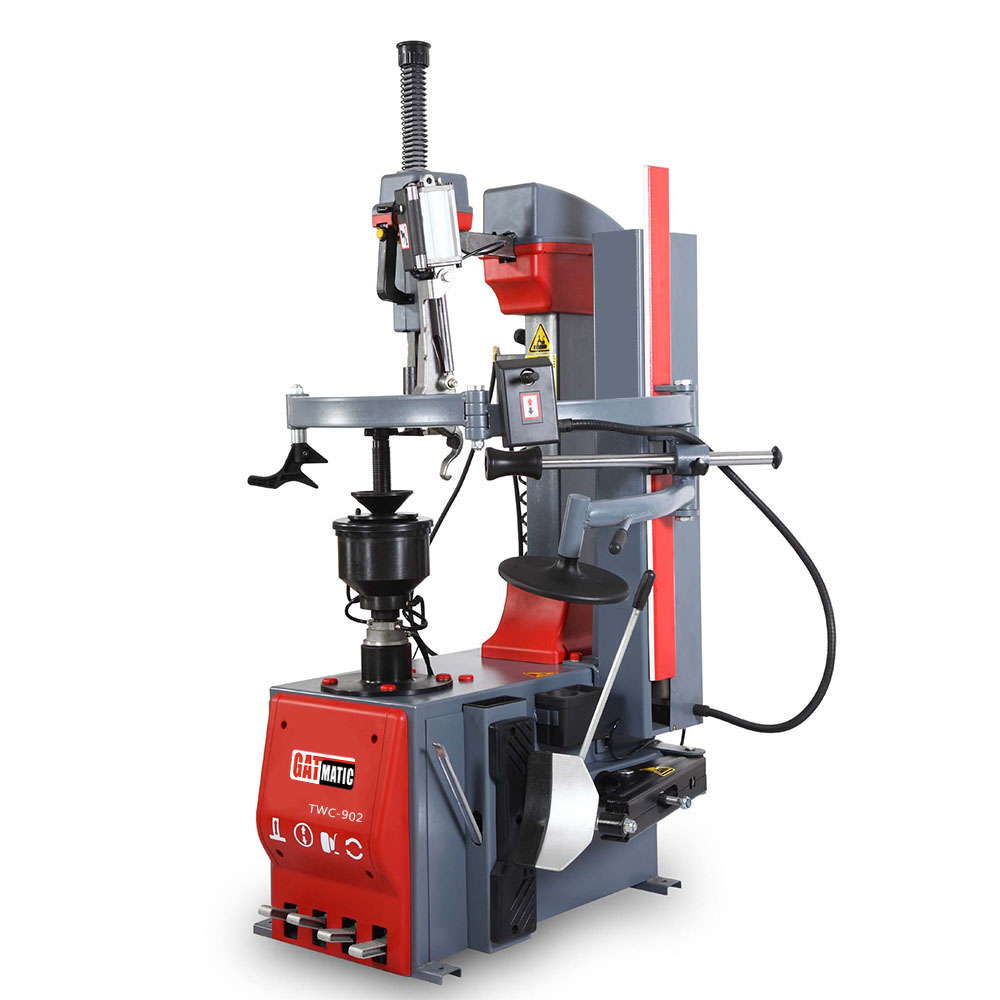Recent Blog
-
GATmatic Shines Bright at Automechanika Astana 2024
2024-04-22 -
Are advanced tire changers cost-effective for automotive businesses?
2024-04-20 -
What impact do advanced tire changers have on overall automotive industry standards?
2024-04-20 -
Can Tire changers handle all types of tires and rims?
2024-04-20
How do advanced tire changers differ from traditional methods?
In the realm of automotive maintenance, tire changing stands out as a fundamental yet labor-intensive task. Over time, advancements in technology have revolutionized this process, shifting from traditional manual methods to sophisticated automated systems. This essay delves into the differences between advanced tire changers and traditional methods, exploring their operational disparities, benefits, and implications for the automotive industry.
I. Traditional Tire Changing Methods
Traditionally, tire changing relied heavily on manual tools and techniques. Mechanics used tire irons, pry bars, and bead breakers to demount and mount tires onto rims. This approach was characterized by its labor-intensive nature, requiring significant physical effort and skill. The process often involved exerting force to break the bead of the tire, followed by meticulous handling to avoid damaging the rim or tire.
II. Features of Advanced Tire Changers
In stark contrast, advanced tire changers leverage cutting-edge technology to streamline the process. These machines are equipped with automated features such as tire mounting and demounting systems, advanced bead-breaking mechanisms, and integrated wheel lifters. They incorporate key technological advancements like efficient bead-seating systems, rim-protection features, and tire pressure monitoring capabilities.
III. Operational Differences
The operational disparities between advanced tire changers and traditional methods are profound. Advanced machines offer unmatched speed, efficiency, and precision. They reduce the physical strain on operators, enhancing workplace safety. Moreover, these systems ensure greater accuracy in tire mounting and balancing, resulting in optimal performance and longer tire lifespan.
IV. Benefits of Advanced Tire Changers
The benefits of advanced tire changers extend beyond efficiency. They save valuable time, making automotive maintenance operations more productive. These machines also improve safety by minimizing the risk of tire or rim damage during the changing process. Furthermore, they can handle a wider range of tire and rim sizes, catering to diverse vehicle types and models.
V. Comparison with Traditional Methods
When comparing advanced tire changers with traditional methods, the differences are stark. Advanced systems require less skill and training due to their automated functionalities. While they may have a higher initial investment cost, they offer substantial long-term savings through increased productivity and reduced labor expenses.
VI. Applications and Industry Impact
The impact of advanced tire changers is felt across various sectors of the automotive industry. Repair shops, tire service centers, commercial fleet maintenance facilities, and OEM manufacturing and assembly lines all benefit from the efficiency and reliability of these machines. They contribute to smoother operations, quicker turnaround times, and enhanced customer satisfaction.
VII. Future Trends and Innovations
Looking ahead, the future of tire changing technology is poised for further innovation. We anticipate the integration of AI and robotics to optimize tire changing processes. Smart tire changers with predictive maintenance features will become commonplace, allowing for proactive servicing and minimizing downtime. Additionally, sustainability will play a crucial role, with a focus on eco-friendly materials and energy-efficient operations.
In conclusion, advanced tire changers represent a significant evolution in automotive maintenance, offering unparalleled efficiency, safety, and precision compared to traditional methods. As technology continues to advance, these machines will play a pivotal role in shaping the automotive industry, driving productivity, and enhancing operational standards across the board.
Get Access Now: https://www.gat-matic.com
FAQs
1. What is an advanced tire changer?
- An advanced tire changer is a sophisticated piece of equipment used in automotive maintenance to automate the process of mounting and demounting tires from rims. It utilizes technology such as automated bead-breaking systems, tire mounting/demounting machines, and integrated wheel lifters to streamline the tire changing process.
2. How do advanced tire changers differ from traditional manual methods?
- Advanced tire changers automate many aspects of tire changing that were traditionally done manually. They reduce physical effort, increase speed and precision, and often include features like rim protection, tire pressure monitoring, and compatibility with a wider range of tire and rim sizes.
3. What are the benefits of using an advanced tire changer over traditional methods?
Advanced tire changers offer numerous benefits, including:
- Increased efficiency and speed in tire changing operations
- Reduced risk of damage to tires and rims
- Improved workplace safety by minimizing physical strain on operators
- Enhanced precision and accuracy in tire mounting and balancing
- Compatibility with a broader range of tire and rim sizes, catering to diverse vehicles
4. Are advanced tire changers suitable for all types of vehicles?
- Yes, advanced tire changers are designed to handle a wide variety of vehicles, from passenger cars and SUVs to commercial trucks and buses. They are adaptable and can accommodate different tire and rim sizes commonly used across various vehicle types.
5. What features should I look for in an advanced tire changer?
When considering an advanced tire changer, look for features such as:
- Automated bead-breaking systems for easier demounting
- Rim-protection features to prevent damage during tire changing
- Tire pressure monitoring capabilities
- Compatibility with run-flat tires and low-profile tires
- User-friendly interface and controls for ease of operation
6. How do advanced tire changers contribute to efficiency in automotive maintenance shops?
- Advanced tire changers significantly reduce the time required to change tires compared to manual methods. This increased efficiency allows automotive maintenance shops to handle more customers, improve turnaround times, and enhance overall productivity.
Describe Your Needs In Detail!
We will carefully evaluate your needs and give professional solutions.




